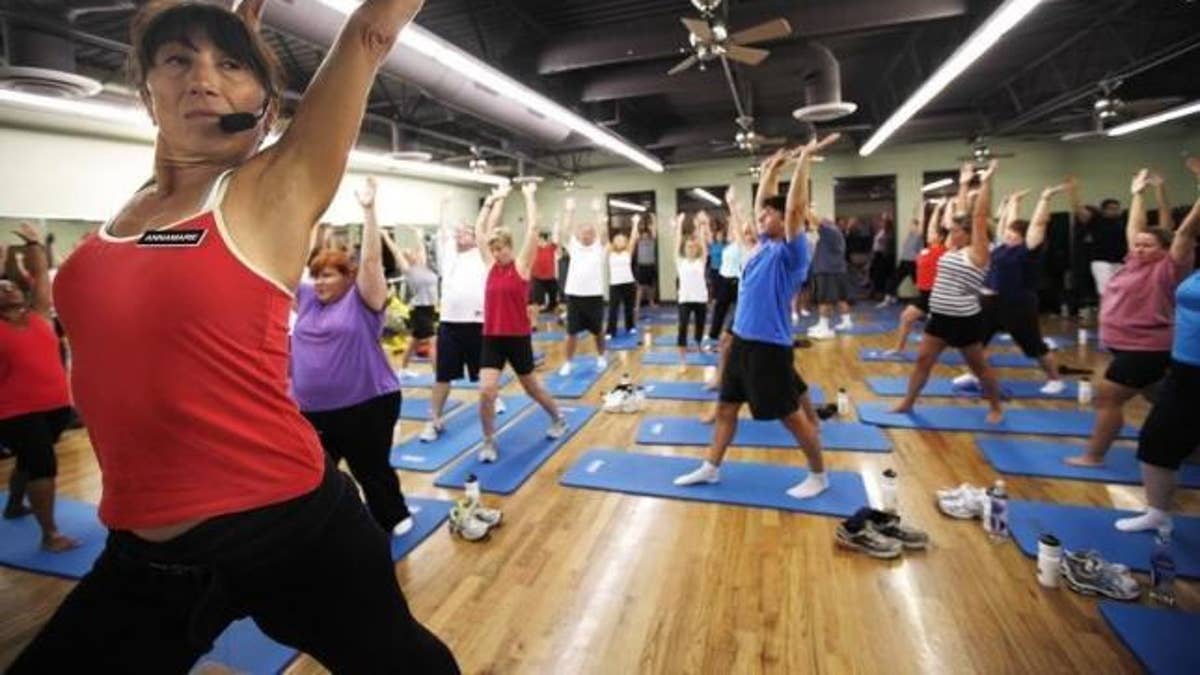
Trainer Anne Marie Smith (L) leads guests in a Pilates workout before dawn at the Biggest Loser Resort in Ivins, Utah September 6, 2010. REUTERS/Rick Wilking
Older women with lower back pain who add pilates to their physical therapy routine may see improvements in balance and reductions in fear of falling that don't result from other types of exercise, a Spanish study suggests.
Researchers followed about 100 women aged 65 and older, offering all of them physiotherapy twice a week with 40 minutes of nerve stimulation and 20 minutes of massage and stretching exercises. Half the women also received hour-long pilates sessions twice a week.
After six weeks, the women who did pilates reported a reduced fear of falling, while the other women didn't. Pilates was also linked to greater improvements in balance and reductions in back pain.
"Pilates exercises focus not only on physical but also on psychological development, and mind-body interaction is the main principal of the method," lead author Dr. Fidel Hita-Contreras of the University of Jaen in Spain said by email.
Millions of people worldwide suffer from lower back pain at some point in their lives, and the risk increases with age. Symptoms can range from a dull, constant ache to a sudden sharp pain that makes it difficult to move.
Fear of falling is a major health problem among the elderly, associated not only with actual risk of falling but also with less physical activity, avoidance of daily activities, and lower quality of life, Hita-Contreras and colleagues note in the journal Maturitas.
Pilates uses a series of controlled movements to improve core strength, posture and balance. The exercises concentrate on strengthening muscles in the lower and upper back, hips, buttocks and inner thighs.
Although pilates is widely recommended by doctors and physical therapists as a tool to improve balance and reduce falls, few studies have evaluated its effectiveness in women over 65 living with back pain, the researchers note.
At the start of the study, the women were about 71 years old on average and generally within a healthy weight range. Most were married, almost half had at least some college education, and slightly less than a third were still working.
Researchers used a questionnaire to assess fear of falling at the start and end of the study.
To detect changes in balance, researchers gave the women a timed test requiring them to stand up from a chair, walk three meters, turn around, and sit down again. They also questioned women about pain associated with these activities.
The study is small, and the results may not apply to younger women, the researchers acknowledge. More studies are also needed to evaluate the long-term effects of pilates, the authors note.
Still, the results add to evidence that pilates can have a positive impact on balance after less than two months of workouts, said Cherie Wells, a physiotherapy researcher at the University of Canberra in Australia who wasn't involved in the study.
"While improvements may be even greater with a longer pilates exercise program, women may find improvements as early as six weeks," Wells said by email. "I would think, though, that it is important to maintain strength and fitness with ongoing exercise to prevent decline in the future."
